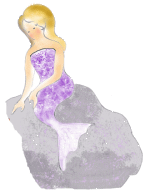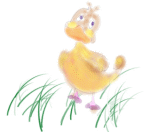Introduction
The literary output of Danish
author Hans Christian Andersen (1805-1875) includes 175 stories and
fairy tales, 800 poems, six novels, several autobiographies, innumerable
travel books and works for the theatre. Andersen is especially renowned
for his lovely fantasy stories and fairy tales, which can be appreciated
by both children and adults alike. His stories have been translated
into 123 languages (for further details please visit: http://www.odmus.dk/andersen/eventyr/start.asp?sprog=engelsk).
This is an amazing feat because no writings except the Bible have been
translated into more languages. The numerous printed editions and cinematic
versions of Andersen’s fairy tales serve to keep his memory alive.
Life
Andersen was born in Odense, Denmark to the family
of a poor cobbler, who believed he was of aristocratic origin and loved
literature. Andersen’s mother, a washerwoman, was uneducated but
nonetheless exposed her son to the world of folklore. During his childhood,
Andersen received little education and possessed a highly emotional
nature, suffering from countless bouts of fear and humiliation due to
his uncommon height and “effeminate” interests (i. e., singing
and dancing). Encouraged by his parents, he composed his own fairy tales
and arranged puppet shows, and often attended productions at the local
playhouse with his father. Later, after leaving his hometown, Andersen
passed his examinations and graduated from Copenhagen University, where
he completed his education.
Before achieving success as a playwright and novelist,
Andersen was trained as a singer, dancer and actor. However when he
was casually referred to as a poet by a friend it changed his focus.
As he says, “It went through me, body and soul, and tears filled
my eyes. I knew that from that very moment, my mind was awake to writing
and poetry.”
Beginning in 1831 Anderson traveled widely in Europe,
and remained a passionate traveler all his life, recording his impressions
of adventures in Asia Minor and Africa in several travel books. However,
Andersen’s international renown rests largely on his fairy tales
and stories, written between 1835 and 1872, including “The Little
Mermaid,” “The Emperor’s New Clothes” and “The
Ugly Duckling,” Andersen’s most self-revealing work.
Spiritual
Awareness
In one of Her lectures, Supreme Master Ching Hai interprets “The
Ugly Duckling,” saying that the nature of the title character
is actually that of a swan, one of the world’s most precious and
beautiful creatures, but she mixes in with a duck herd, making herself
look very odd. Similarly, we spiritual practitioners are sometimes rejected
by society because our concepts are different than those of people in
the mundane world. We should not feel hurt by these circumstances, however
— perhaps we are just “swans in a duck herd.” In addition,
such rejection can aid us in our spiritual cultivation. Because just
like the ugly duckling was abandoned by a duck herd, learned she was
a swan and returned to the flock of swans where she belonged, we too
can find our true Home through rejection by society.
One can discover other spiritual themes and imagery
in Andersen’s works as well. For example, the following passage
from the story “The Bell” (1845) suggests that the author
experienced some degree of enlightenment: “The whole of nature
was a large holy church, in which the trees and hovering clouds formed
the pillars, the flowers and grass, the woven velvet carpet, and Heaven
itself was the great cupola; up there the flame color vanished as soon
as the sun disappeared, but millions of stars were lighted; diamond
lamps were shining, and above them sounded the invisible holy bell;
happy spirits surrounded them, singing hallelujahs and rejoicing.”
Another sign of Andersen’s spiritual awareness
can be found in the story “The Pen and the Inkstand” (1860),
in which he honors Almighty God, stating, “How foolish it would
be for the violin and the bow to boast of their performance, and yet
we men often commit that folly. The poet, the artist, the man of science
in his laboratory, the general — we all do it; and yet we are
only the instruments which the Almighty uses; to Hirm alone the honor
is due. We have nothing of ourselves of which we should be proud.”
And to reaffirm his devotion, the author ends the story with the line
“To Hirm be all the Honor.”
Epilogue
Hans Christian Andersen, master of fairy tales, died on August 4, 1875.
Throughout his life Andersen was poor and lonely, but as we know, it
is possible to seize the opportunity of such adversity to truly shine.
We can be the best at what we do by accepting the negative aspects of
our lives as lessons through which to learn and grow. Thus, Hans Christian
Andersen’s spirituality shone through a difficult life as he managed
to produce inspirational literature that is still read by young and
old alike around the world — a legacy of unique and heartening
stories that offer lessons for us all. 
For online story viewing,
please visit:
http://hca.gilead.org.il/
(in English)
http://www.sm21.net/jing/anderson
(in Chinese)



